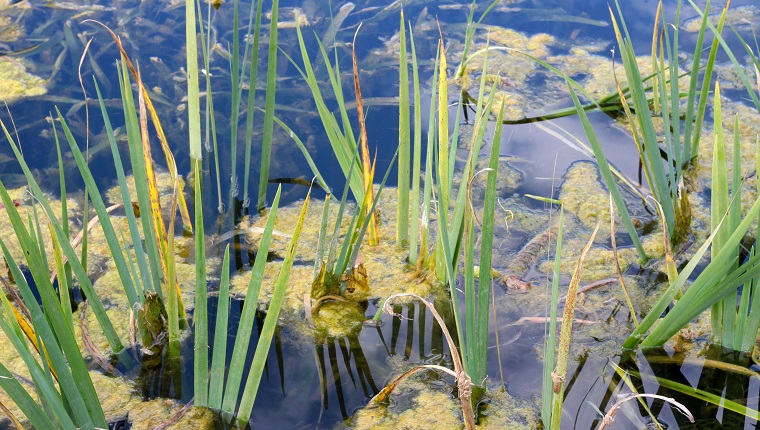Blooms of cyanobacteria — also known as blue-green algae — have been spotted amongst the floating vegetation surrounding Lady Bird Lake in Austin, TX.
This algae is toxic and can kill dogs. The recent blooms serve as a reminder to those of us with children, canine or human, to be vigilant around aquatic areas where we take our loved ones, no matter where we live.
Here’s what you need to know about these blue-green algae blooms and how to keep your dog safe.
What Should I Do If I Live In Or Near Austin?
Toxic blue-green algae cyanobacteria in Lady Bird Lake continues to threaten the health of people and dogs that may come into contact with it — it’s been linked to the deaths of several animals in the past two years.https://t.co/Xg481hU7Rm
— KXAN News (@KXAN_News) September 21, 2021
At this time, if you live in the vicinity of Lady Bird Lake, officials recommend steering clear of all lakes, creeks, and general bodies of water. This includes stock ponds or storm water ponds.
High levels of the toxins produced by this algae have been reported at Cold Spring, TX between MoPac and Red Bull Isle.
If you cannot avoid these aquatic areas, stay on the lookout for the algae, and keep both pets and people from interacting with it. In 2019, several dogs died following the last bloom of the algae in these areas.
I’m Not In Austin. Do I Need To Look Out For Cyanobacteria?
Summer is not quite over yet! Cyanobacteria can still bloom, causing water to look green, which can be harmful to humans and animals. “When in doubt, stay out!” This sample was pulled from the Fox River on Sunday, Sept. 5. Learn more: https://t.co/1IP5U8DCje #LoveYourWatershed pic.twitter.com/4IMkzOgIj8
— NEW Water (@NEWWater_WI) September 16, 2021
Yes, you still need to watch out for toxic algae no matter where you live.
Areas all over the United States have had reported blooms, over the years. However, there’s no need to panic; just research the area where you live, and keep your pets safe.
This is bacterial bloom is #art to me.#cyanobacteria are pretty cool, but it worries me, that many people along the shoreline think it’s just harmless algae. When I mention bluegreen algae..they are surprised. I guess some serious public education on this subject is needed. pic.twitter.com/JgYK1vGQSa
— PB Haarlemmermeer (@pbhbos) September 18, 2021
Luckily, the internet can be a wonderfully resourceful place, and the Environmental Working Group has already done most of the work for you.
With EWG’s interactive map, you can plainly see every location where harmful blue-green algae have had reported blooms dating back to 2010.
To find out more about Cyanobacteria, how to spot it, and what its symptoms entail, please visit the Center for Disease Control’s informational page, or download their PDF here.
Have you had any run-ins with blue-green algae in your area? Do you keep an eye out and make sure your dog doesn’t play in dangerous bodies of water? Let us know in the comments below!









